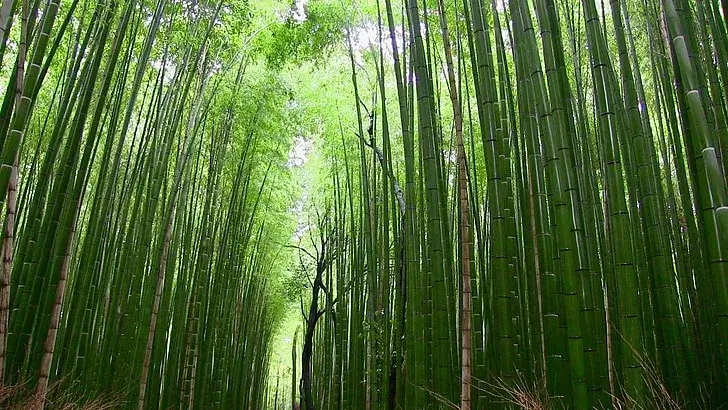
What Is Bamboo Fabric and Why Is It More Sustainable?
By Steven Green | August 21, 2023
Bamboo fabric is gaining popularity as a sustainable alternative to traditional textiles. But what exactly is it, and why is it considered more eco-friendly? In this article, we will explore the origins of bamboo fabric, its numerous benefits, and its minimal environmental impact.
We will also delve into the manufacturing process and provide tips on how to properly care for bamboo fabric. So, if you’re curious about this innovative and sustainable fabric, keep reading!
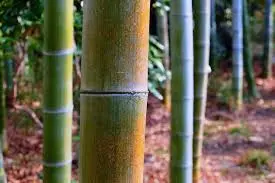
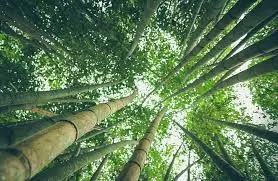
The Origins of Bamboo Fabric
Now, let’s dive into where bamboo fabric actually comes from and why it is considered more sustainable. Bamboo fabric is derived from the cellulose fibers of the bamboo plant. The process begins with harvesting the bamboo stalks, which are then cut into small pieces and soaked in a solution to break down the cellulose.
This solution is often a combination of chemicals, such as sodium hydroxide and carbon disulfide, which may raise concerns about the environmental impact. However, the manufacturing process can be modified to minimize the use of harmful chemicals and reduce water consumption.
Additionally, bamboo is a highly renewable resource as it grows rapidly and requires minimal water and pesticides. Its natural properties also make it naturally antibacterial, hypoallergenic, and biodegradable, further contributing to its sustainability.
SUBSCRIBE
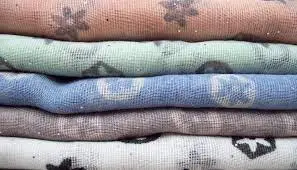
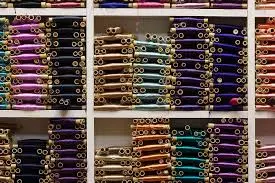
The Benefits of Bamboo Fabric
You will be pleased to know that bamboo fabric has a multitude of benefits for both you and the environment. First and foremost, bamboo fabric is incredibly soft and comfortable to wear. It has a luxurious feel that rivals even the finest cotton fabrics.
Additionally, bamboo fabric is highly breathable, making it perfect for warm weather and active lifestyles. It also has natural antibacterial and hypoallergenic properties, making it great for people with sensitive skin or allergies. Furthermore, bamboo fabric is highly sustainable and eco-friendly.
Bamboo is a fast-growing plant that requires minimal water and no pesticides or fertilizers to grow. It also releases more oxygen into the atmosphere and absorbs more carbon dioxide than other plants, making it a great choice for the environment.
The Environmental Impact of Bamboo Fabric
The environmental impact of bamboo fabric can be seen in its fast growth and minimal water and pesticide requirements. Bamboo is known for its rapid growth, with some species growing up to 91 centimeters in just one day.
This means that bamboo can be harvested and replenished at a much faster rate compared to other natural fibers. Additionally, bamboo requires significantly less water compared to cotton, one of the most commonly used fabrics. Bamboo can thrive with just rainfall and does not require additional irrigation.
Furthermore, bamboo has natural antimicrobial properties, which means that it requires fewer pesticides or fertilizers to grow. The minimal water and pesticide requirements of bamboo fabric make it a more sustainable choice for the environment.
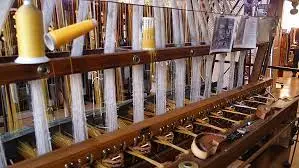
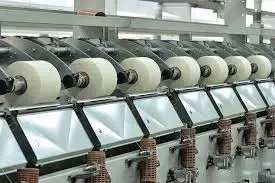
The Manufacturing Process of Bamboo Fabric
During the manufacturing process of bamboo fabric, the bamboo pulp is extracted and processed into fibers. First, the bamboo stalks are cut and soaked in a solution of sodium hydroxide to remove impurities and break down the bamboo into a pulp. This pulp is then mechanically processed to create bamboo fibers.
These fibers are spun into yarn and can be woven or knitted into fabric. The process of making bamboo fabric does not involve the use of harmful chemicals or pesticides, making it an eco-friendly choice.
Furthermore, bamboo fabric is naturally antimicrobial and hypoallergenic, making it suitable for those with sensitive skin. Overall, the manufacturing process of bamboo fabric is not only sustainable but also produces a versatile and comfortable material.
How to Care for Bamboo Fabric
To keep your bamboo fabric in top condition, it is important to follow the care instructions provided on the garment’s label. Washing bamboo fabric is quite simple. It is recommended to use cold or warm water and gentle cycle when machine washing. Avoid using bleach or fabric softeners as they can damage the fibers.
After washing, it’s best to air dry the fabric or use a low heat setting in the dryer. Ironing should be done on low heat and preferably with a cloth between the iron and the fabric. With proper care, bamboo fabric can maintain its softness and durability for a long time, making it a great sustainable option for clothing.
Frequently Asked Questions
Is Bamboo Fabric the Same as Cotton Fabric?
No, bamboo fabric is not the same as cotton fabric. Bamboo fabric is made from bamboo fibers, while cotton fabric is made from cotton fibers. They have different properties and sustainability factors.
Are There Any Health Benefits to Wearing Bamboo Fabric?
There are health benefits to wearing bamboo fabric. It is hypoallergenic and has natural antimicrobial properties, keeping you fresh and odor-free. It also provides UV protection, making it a great choice for outdoor activities.
Can Bamboo Fabric Be Composted?
Bamboo fabric cannot be composted due to its synthetic nature. However, it is a sustainable alternative to traditional fabrics, as it requires less water and pesticides to grow and has a smaller carbon footprint.
Can Bamboo Fabric Be Used for Outdoor Clothing?
Yes, bamboo fabric can be used for outdoor clothing. Its natural properties make it a great choice as it is moisture-wicking, breathable, and has UV protection. Its sustainability adds to its appeal.
Is Bamboo Fabric Suitable for People With Sensitive Skin?
Bamboo fabric may be suitable for people with sensitive skin due to its hypoallergenic properties. It is known to be gentle and soft, making it a comfortable option for those with sensitivities.
Conclusion
In conclusion, bamboo fabric is a sustainable and eco-friendly alternative to traditional fabrics. Its origins can be traced back to bamboo plants, which are fast-growing and require less water and pesticides to grow. Bamboo fabric also offers numerous benefits, such as being soft, breathable, and hypoallergenic.
Moreover, the manufacturing process of bamboo fabric is less harmful to the environment compared to other fabric production methods. By choosing bamboo fabric, individuals can contribute to a more sustainable and environmentally friendly fashion industry.

